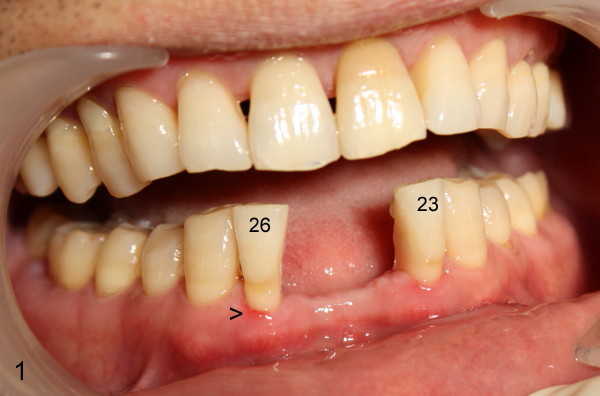

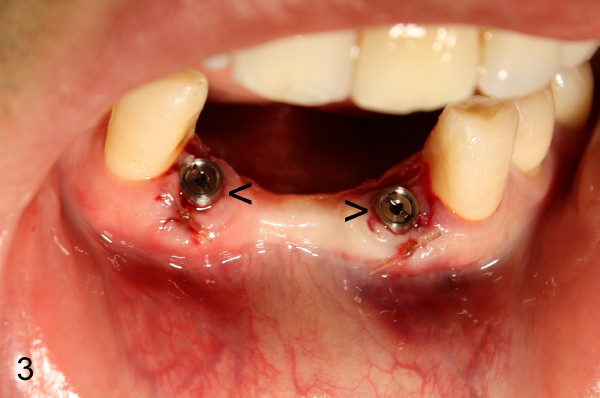

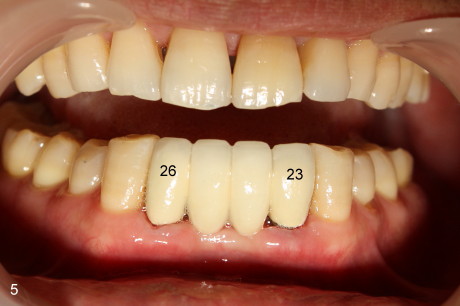
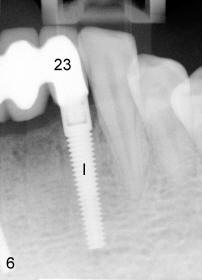
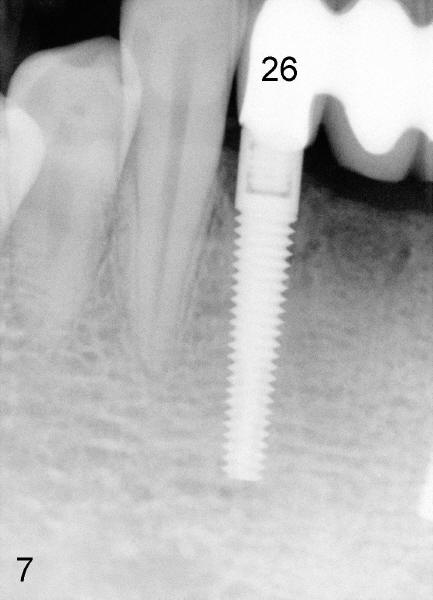
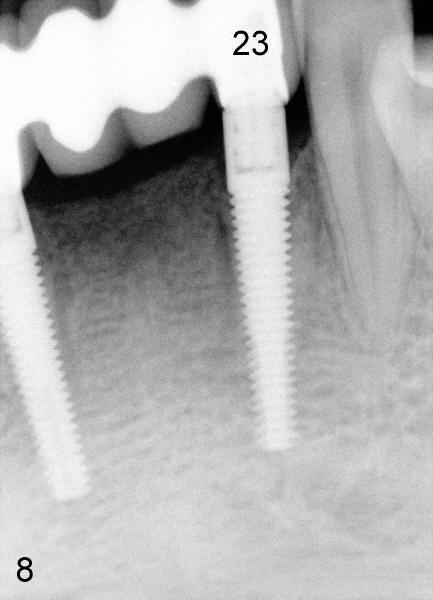
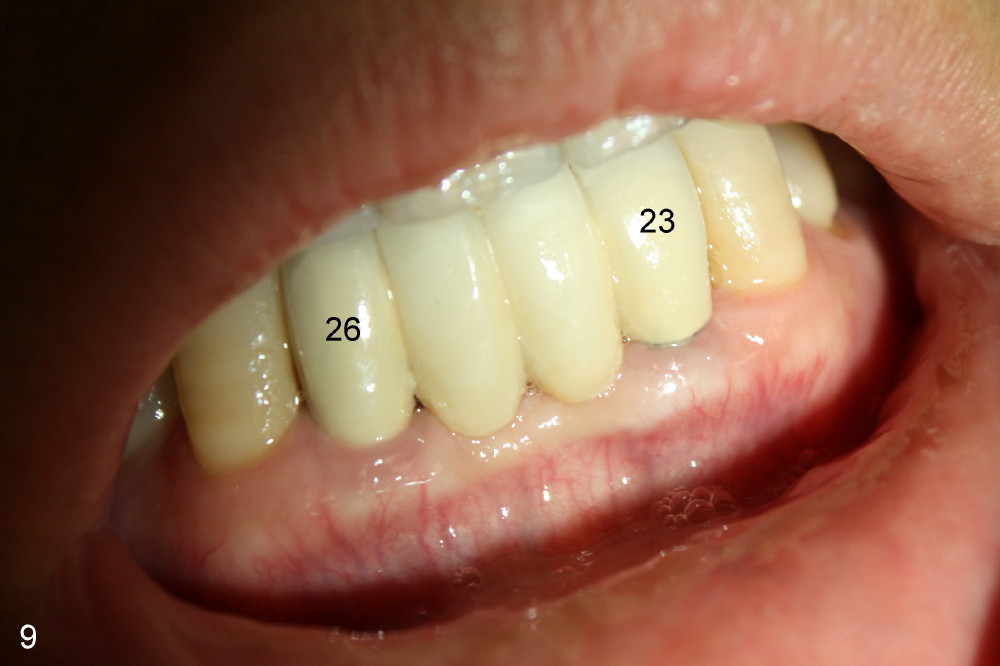
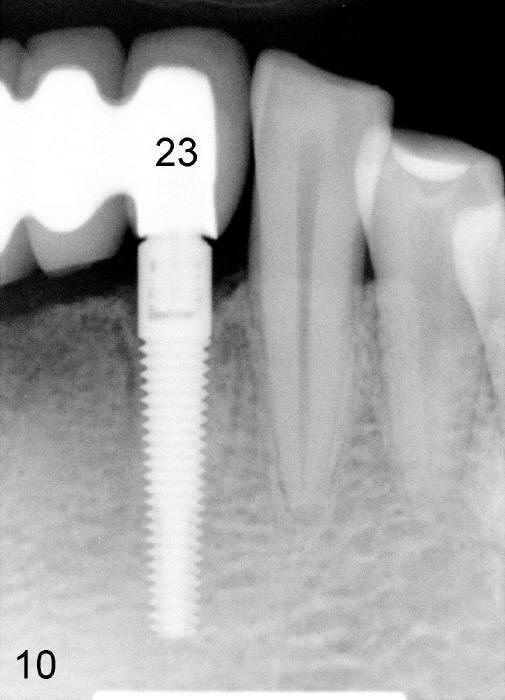
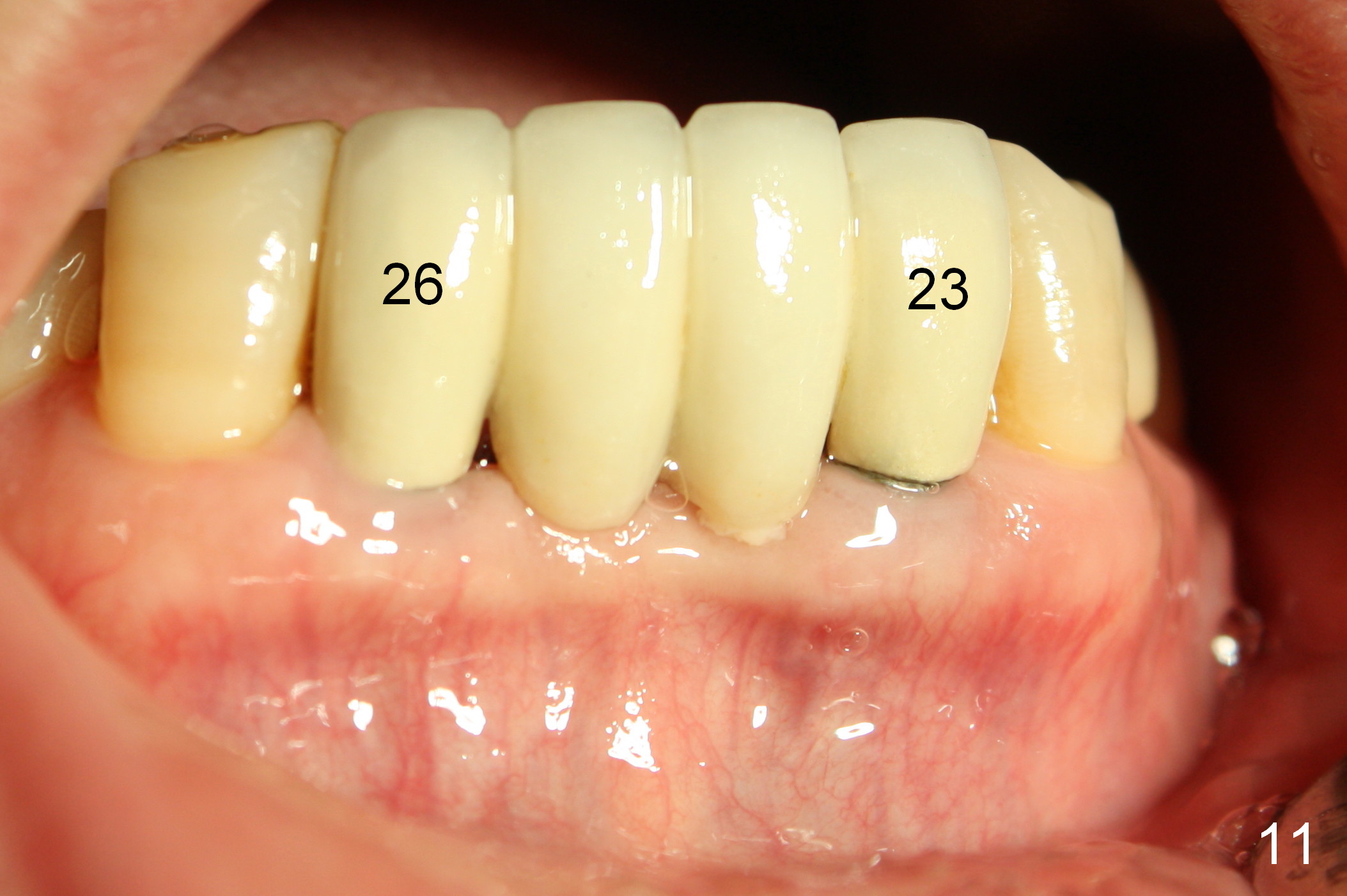
 |
 |
 |
 |
 |
 |
 |
 |
 |
 |
 |
My First Immediate Implants
My first immediate implant patient is a 44-year-old college volleyball coach. His bone is large except the edentulous area of #24 and 25 (Fig.1). These two teeth were lost for unknown etiology twenty years ago and have been replaced by a flipper. The other two lower incisors are traumatized by an accident, celebration after a major conference tournament win (Fig.1,2: #23,26). He is happy to know that one surgery (one injection) can remove the loose teeth and place two implants. Work compensation pays all the expense.
After lengthy application of the benefit, two immediate implants are placed with suture to close the buccal gaps (Fig.3,4: 3.5x20 mm, no bone graft). He is wearing a new flipper without complaint for 4 months.
Offset abutments are inserted (10° for #23, 20° for #26). A fixed partial denture is cemented without complication (Fig.5,6). The offset abutments provide parallelism. This is the advantage of two piece implants, as compare to one piece ones.
The implants and the bridge are doing well six months after cementation (Fig.7,8).
The gingiva and bone surrounding these two implants are continuing to fare well two years after cementation (Fig.9,10). There is no or minimal bone resorption around the implants (Fig.10). The gingiva remains healthy 3 years 2 months post cementation (Fig.11).
Combined with CT image (Fig.2), the extraction sockets offers the best surgical view. With two fingers placed against the buccal and lingual walls, osteotomy can be done without much complication. The surgical technique improves with time and experience. Since this case, almost no extraction is done without immediate implant if there is no financial issue. If our schedule is busy, antibiotic and pain medication are prescribed.
If osteotomy follows the socket aided by tactile orientation of the buccal and lingual plates, CT may not provide significant information in immediate implant placement (2nd case).
Preface to Immediate Implant for Lower Incisors, Immediate Implant, Long-termed Follow Up
Xin Wei, DDS, PhD, MS 1st edition 01/15/2011, last revision 04/21/2018